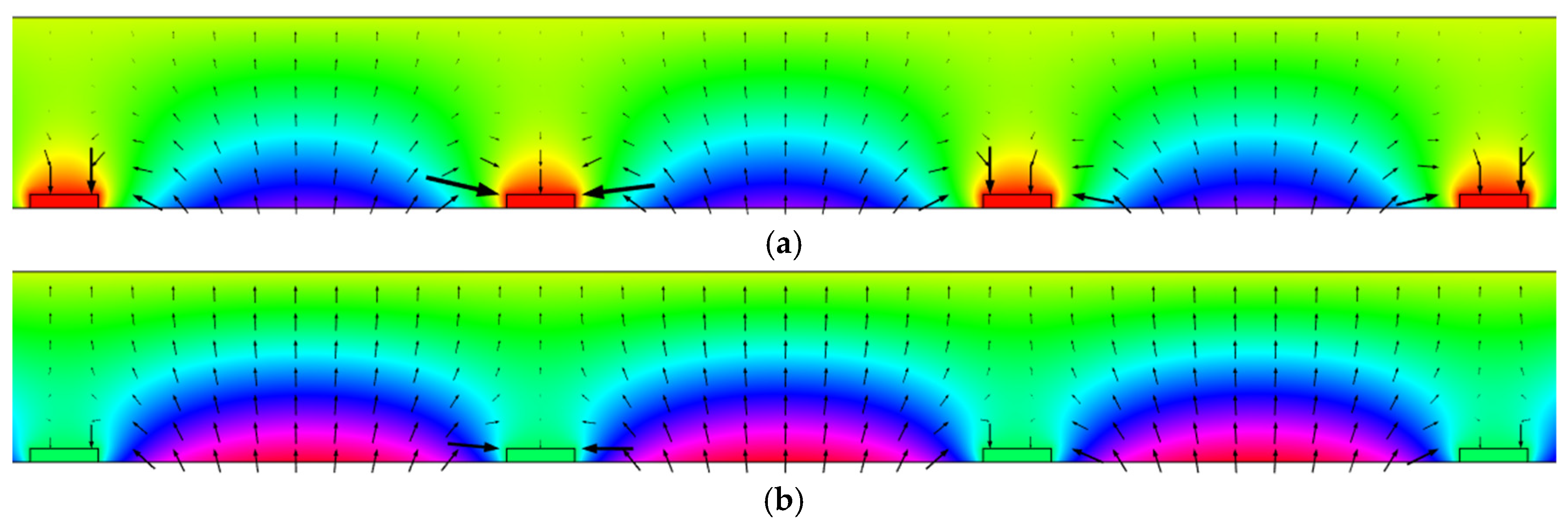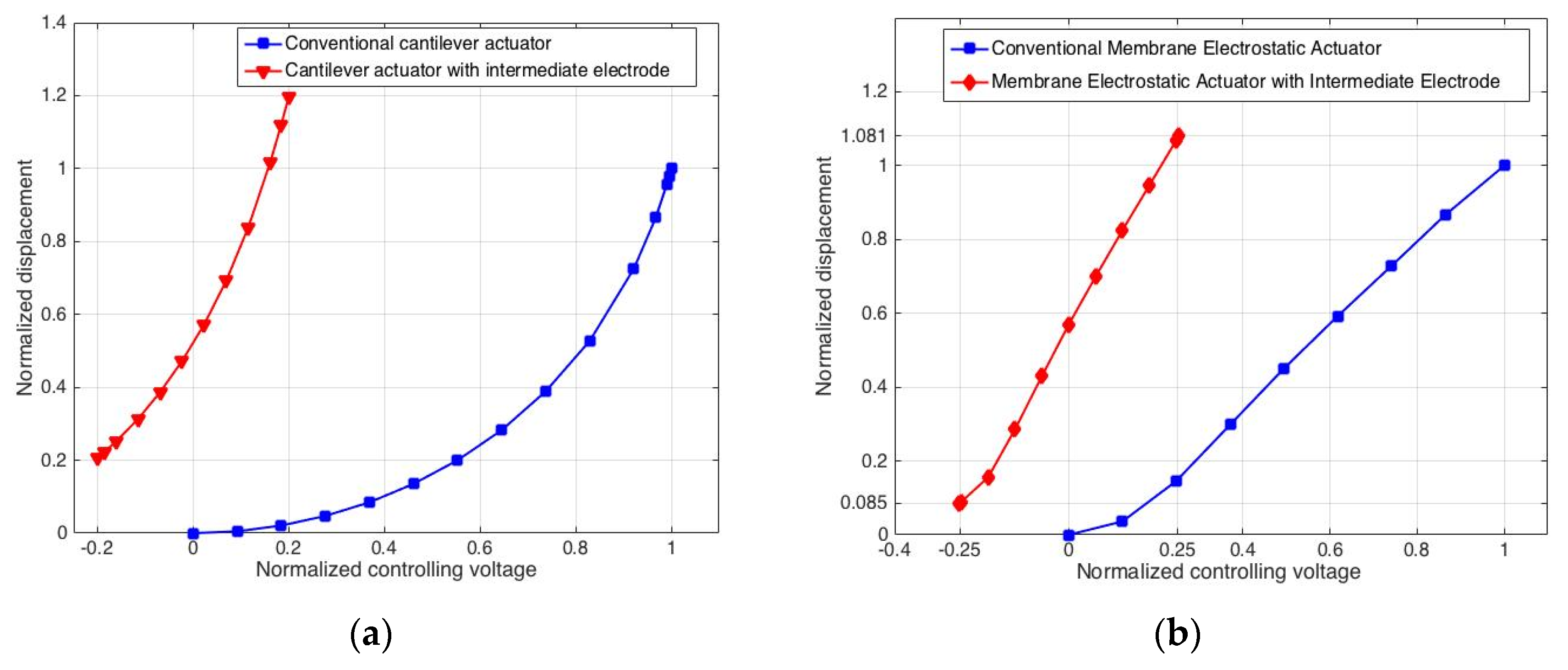Reduction of Electrostatic Control Voltage with a Tri-Electrode Actuator †
Abstract
:1. Introduction
2. Simulation Set-Up to Calculate MEMS Displacement
3. MEMS Displacement Simulation Results
4. Conclusions
Acknowledgments
Conflicts of Interest
References
- Hung, E.S.; Senturia, S.D. Extending the travel range of analog-tuned electrostatic actuators. J. Microelectromech. Syst. 1999, 8, 497–505. [Google Scholar] [CrossRef]
- Shmulevich, S.; Rivlin, B.; Hotzen, I.; Elata, D. A gap-closing electrostatic actuator with a linear extended range. J. Microelectromech. Syst. 2013, 22, 1109–1114. [Google Scholar] [CrossRef]
- Conrad, H.; Schenk, H.; Kaiser, B.; Langa, S.; Gaudet, M.; Schimmanz, K.; Stolz, M.; Lenz, M. A small-gap electrostatic micro-actuator for large deflections. Nat. Commun. 2015. [Google Scholar] [CrossRef] [PubMed]
- Rosa, M.A.; de Bruyker, D.; Völkel, A.R.; Peeters, E.; Dunec, J. A novel external electrode configuration for the electrostatic actuation of MEMS based devices. J. Micromech. Microeng. 2004, 14, 446–451. [Google Scholar] [CrossRef]
- Sugimoto, T.; Nonaka, K.; Horenstein, M.N. Bidirectional electrostatic actuator operated with charge control. J. Microelectromech. Syst. 2005, 14, 718–724. [Google Scholar] [CrossRef]
- Ren, H.; Wang, W.; Tao, F.; Yao, J. A bi-directional out-of-plane actuator by electrostatic force. Micromachines 2013, 4, 431–443. [Google Scholar] [CrossRef]
- Seeger, J.I.; Crary, S.B. Analysis and simulation of MOS capacitor feedback for stabilizing electrostatically actuated mechanical devices. Trans. Built Environ. 1997, 31. [Google Scholar] [CrossRef]




| Parameter | Cantilever Tri-Electrode Actuator | Membrane Tri-Electrode Actuator |
|---|---|---|
| L | 7/6 D | 2/3 D |
| WS | D | 2/5 D |
| WE | 1/6 D | 4/15 D |
| D1 | 7/15 D | 7/15 D |
| D2 | D | D |
Publisher’s Note: MDPI stays neutral with regard to jurisdictional claims in published maps and institutional affiliations. |
© 2017 by the authors. Licensee MDPI, Basel, Switzerland. This article is an open access article distributed under the terms and conditions of the Creative Commons Attribution (CC BY) license (https://creativecommons.org/licenses/by/4.0/).
Share and Cite
Zhou, Y.; Shafai, C. Reduction of Electrostatic Control Voltage with a Tri-Electrode Actuator. Proceedings 2017, 1, 282. https://doi.org/10.3390/proceedings1040282
Zhou Y, Shafai C. Reduction of Electrostatic Control Voltage with a Tri-Electrode Actuator. Proceedings. 2017; 1(4):282. https://doi.org/10.3390/proceedings1040282
Chicago/Turabian StyleZhou, Yu, and Cyrus Shafai. 2017. "Reduction of Electrostatic Control Voltage with a Tri-Electrode Actuator" Proceedings 1, no. 4: 282. https://doi.org/10.3390/proceedings1040282




